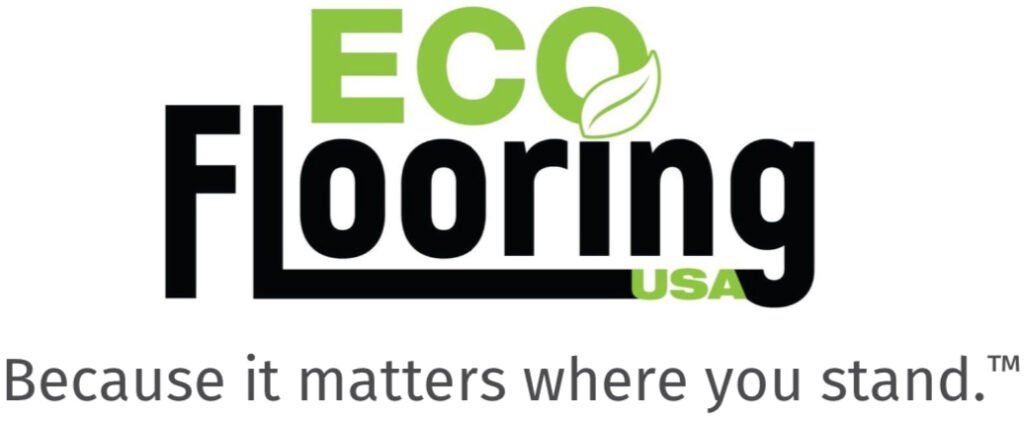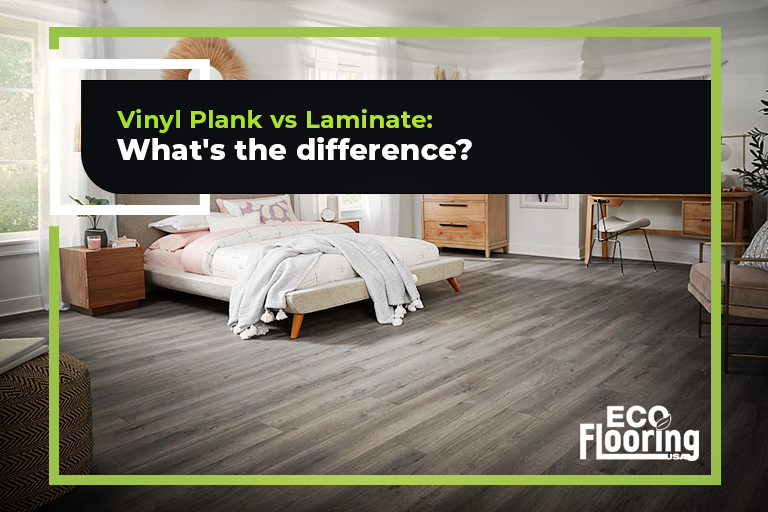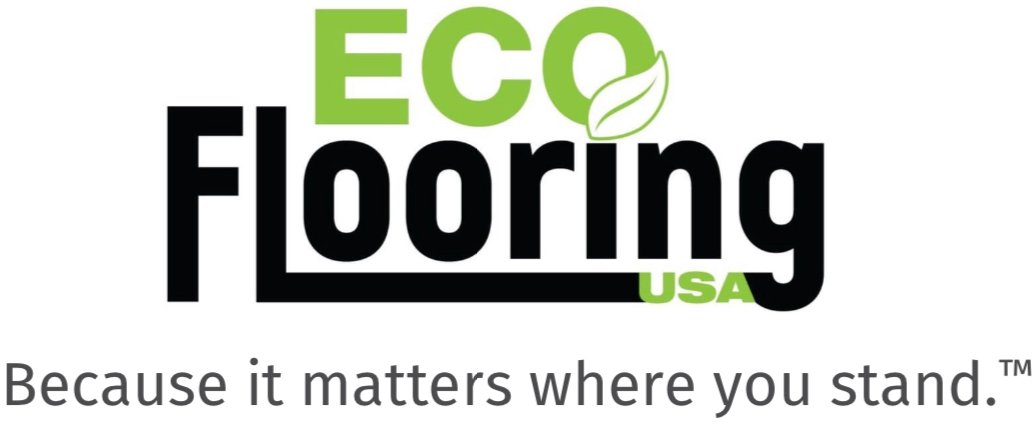Among the variety of flooring options, two stand out: LVP vs Laminate.
Renowned for their affordability, versatility, and aesthetic appeal, these flooring choices have captured the attention of homeowners.
The decision between vinyl plank and laminate has become a pivotal point in modern interior design.
In this blog post, we from Eco Flooring USA will embark on an exploration of the distinctions between vinyl plank and laminate.
Comparison table
Let’s start with a general comparison table between Vinyl Plank vs Laminate:
| Criteria | Vinyl Plank | Laminate |
| Composition and Material | PVC | Fiberboard with a photo layer |
| Appearance and Aesthetics | Realistic wood and stone patterns | Mimics wood or stone textures |
| Installation | Suitable for moisture-prone areas, DIY-friendly | Sensitive to moisture, DIY-friendly with click-and-lock |
| Durability | Resistant to scratches, dents, and stains | Prone to scratches and dents, not as resistant to heavy wear |
| Comfort and Sound | Softer underfoot, quieter | Harder surface, may require rugs for comfort |
| Maintenance | Easy to clean, resistant to spills, low maintenance | Sensitive to moisture, requires more careful maintenance |
| Cost | Generally more budget-friendly | Mid-range pricing, depends on the quality |
Keep reading to learn more about each characteristic of these materials!
LVP vs Laminate: Composition and Material
When it comes to choosing the right flooring for your space, understanding the composition of vinyl plank and laminate is crucial.
LVP (Luxury Vinyl Plank) Composition
Vinyl plank flooring is typically composed of multiple layers:
- Core Layer: The core layer contains PVC (polyvinyl chloride) and a stabilizing material.
- Design Layer: The design layer showcases the visual appearance of wood or stone.
- Wear layer: A wear layer, often treated with urethane for added protection, shields the floor against scratches and stains.
Notably, the best choices in the market carry the GreenGuard® and FloorScore Certified® seals, assuring low chemical emissions for better indoor air quality.
Laminate Composition
Laminate flooring, on the other hand, consists of:
- High-density fiberboard (HDF): topped with a high-resolution photographic layer that mimics the look of wood or stone.
- Transparent wear layer: usually made of aluminum oxide, provides resistance against scratches and wear.
Like vinyl plank, selecting laminate flooring with GreenGuard® and FloorScore Certified® labels ensures a commitment to environmental and indoor air quality standards.
LVP vs Laminate: Appearance and Aesthetics
The visual appeal of flooring plays a pivotal role in shaping the ambiance of a space, making the choice between vinyl plank and laminate a significant decision for homeowners.
Let’s dive into the aesthetics of these two popular flooring options:
LVP (Luxury Vinyl Plank) Aesthetics
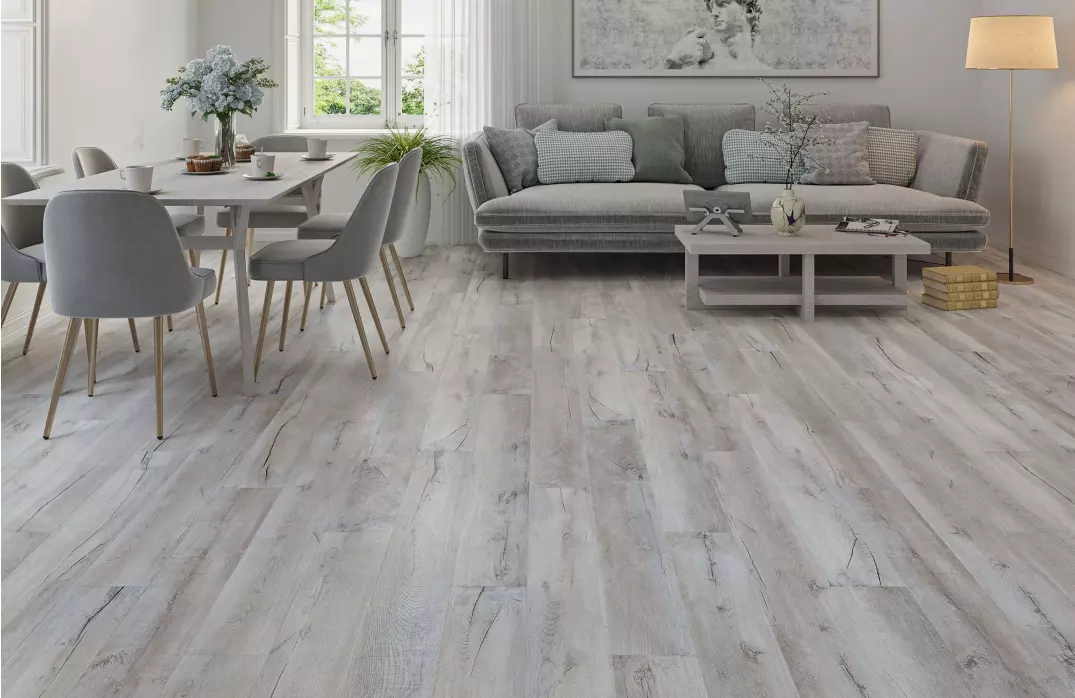
Vinyl plank flooring has evolved to mimic the natural beauty of hardwood or stone with remarkable precision.
Thanks to advanced printing technologies, vinyl planks offer an extensive range of realistic wood grain patterns and stone textures.
Additionally, the embossed textures on the surface of vinyl planks add a tactile dimension, enhancing the authenticity of the flooring.
Laminate Aesthetics
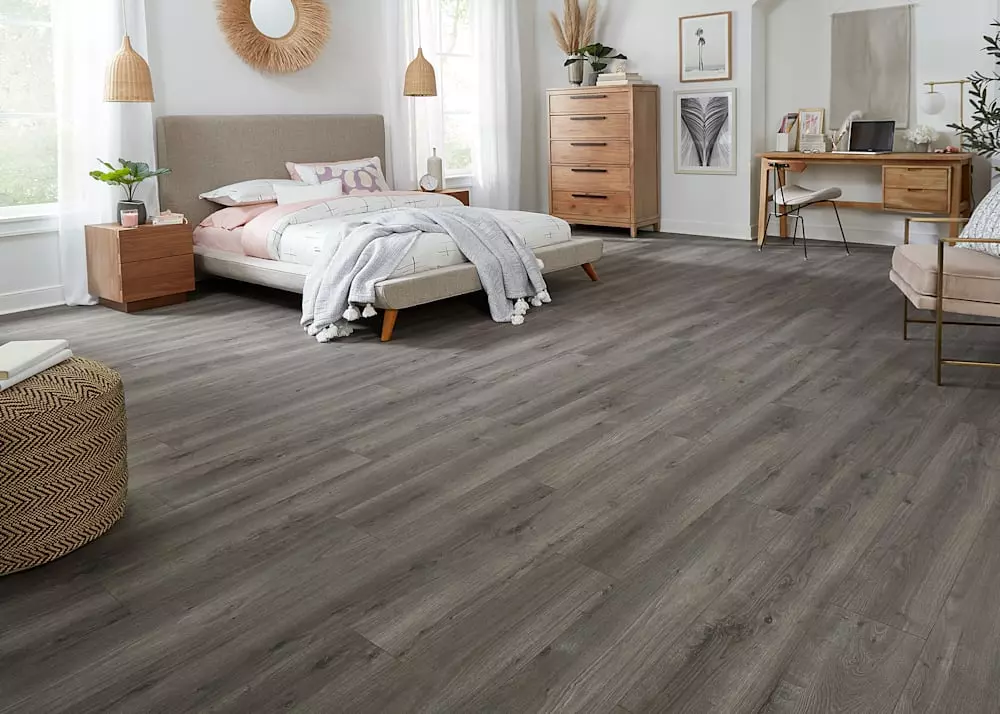
Vinyl plank flooring has evolved to mimic the natural beauty of hardwood or stone with remarkable precision.
Thanks to advanced printing technologies, vinyl planks offer an extensive range of realistic wood grain patterns and stone textures.
Additionally, the embossed textures on the surface of vinyl planks add a tactile dimension, enhancing the authenticity of the flooring.
LVP vs Laminate: Installation
The installation process of flooring is a crucial consideration, influencing not only the outcome but also the convenience of the entire project.
LVP (Luxury Vinyl Plank) Installation
The most common installation methods for vinyl plank include click-lock and glue-down.
The click-lock system is particularly favored for its simplicity, allowing planks to snap together seamlessly.
Vinyl plank’s flexibility and ability to be installed over various subfloors contribute to its versatility.
Laminate Installation
Laminate flooring’s system enables planks to interlock easily, creating a stable and durable floor.
But, his installation requires a bit more precision than vinyl plank due to its thicker composition.
While glue-down options are available for laminate, the click-lock system remains the preferred choice for its efficiency and ease of use.
LVP vs Laminate: Durability
When it comes to flooring, durability is a key factor influencing the longevity and performance of your investment.
LVP (Luxury Vinyl Plank) Durability
Vinyl plank flooring is celebrated for its robust durability, particularly in high-traffic areas and homes with active lifestyles.
The wear layer, often treated with urethane or enhanced coatings, provides excellent resistance against scratches and dents.
This makes vinyl plank an ideal choice for households with pets, where claws and accidental spills may be a concern.
Additionally, its water-resistant properties make vinyl plank a suitable option for areas prone to moisture, ensuring minimal risk of warping or damage over time.
Laminate Durability
Laminate flooring also features commendable durability, offering resistance to scratches, dents, and stains.
The wear layer, typically constructed with aluminum oxide, provides a protective shield against daily wear and tear.
While laminate is generally resilient in areas with moderate foot traffic, it may be more susceptible to moisture-related issues compared to vinyl plank.
Although advancements in laminate technology have improved its resistance to water, it’s essential to promptly address spills to prevent damage.
LVP vs Laminate: Comfort and Sound
As you navigate the decision between vinyl plank and laminate flooring, the elements of comfort and sound play a significant role in shaping your living experience.
LVP (Luxury Vinyl Plank) Comfort
Vinyl plank flooring, known for its flexibility and softer surface, provides a comfortable underfoot feel.
The composition of vinyl plank, especially in the Luxury Vinyl Plank (LVP) category, contributes to a more forgiving surface that can be gentler on joints.
The additional underlayment can further enhance the overall comfort, creating a flooring solution that accommodates both style and well-being.
Laminate Comfort
Laminate flooring, while generally firm, can be more forgiving with the addition of an underlayment.
The underlayment provides an extra layer of cushioning, contributing to a more comfortable underfoot experience.
Homeowners often choose specific underlayments based on their desired level of comfort, tailoring the flooring to suit their preferences.
LVP vs Laminate: Maintenance
Maintaining the beauty and longevity of your flooring investment is a key consideration in the Vinyl Plank vs Laminate debate.
LVP (Luxury Vinyl Plank) Maintenance
Vinyl plank flooring takes the spotlight for its hassle-free maintenance. Its water-resistant nature makes it highly resilient to spills and easy to clean.
Routine maintenance involves regular sweeping or vacuuming to remove debris that could scratch the surface. For deeper cleaning, a damp mop with a manufacturer-approved cleaner is usually sufficient.
The protective wear layer on vinyl plank also aids in resisting stains.
Laminate Maintenance
Laminate flooring also offers straightforward maintenance.
While it’s not as water-resistant as vinyl plank, laminate can handle occasional spills if promptly addressed.
Routine cleaning involves dry methods such as sweeping or vacuuming. When a deeper clean is necessary, a damp mop with a laminate-approved cleaner can effectively refresh the surface.
Also, the laminate’s wear layer provides an additional barrier against stains, facilitating easy cleanup.
LVP vs Laminate: Cost
Cost considerations are often a driving force in the decision-making process when it comes to flooring options.
Finally, let’s explore the budget-friendly aspects of both vinyl plank and laminate, helping you make an informed decision based on your financial considerations.
LVP (Luxury Vinyl Plank) Cost
Vinyl plank flooring is renowned for its affordability, making it an attractive option for budget-conscious homeowners.
The cost of vinyl plank is typically lower than that of natural hardwood or stone flooring, offering a cost-effective solution without compromising on style or durability.
Laminate Cost
Laminate flooring also stands out as a budget-friendly alternative to hardwood or stone.
Its cost-effectiveness is attributed to the use of high-density fiberboard (HDF) as the core material, providing durability without the high price tag.
However, it’s important to note that vinyl plank generally has a lower cost compared to laminate, making vinyl plank an even more cost-effective choice for those looking to stay within a tight budget.
Comparing Long-Term Value
While both vinyl plank and laminate offer upfront cost savings compared to natural materials, it’s essential to consider the long-term value they provide.
Their durability, low maintenance requirements, and resistance to wear and tear contribute to extended lifespans, making them cost-effective choices over time.
As we delve into the nuances between Laminate Floor and Vinyl Plank, it’s evident that both options offer distinct advantages.
Your #1 choice for sustainable flooring solutions in Metro Atlanta-GA
Finally, here at Eco Flooring USA we proudly stand as a premier destination for those in pursuit of the highest standards of quality and elegance in flooring solutions.
Eco Flooring USA is a reliable source for Laminate Floor and Vinyl Plank! Committed to quality and sustainability, Eco Flooring USA offers environmentally friendly options to meet modern demands for innovative design and environmental responsibility.
Contact us today to explore our extensive range of flooring solutions and discover the perfect fit for your home or business!
